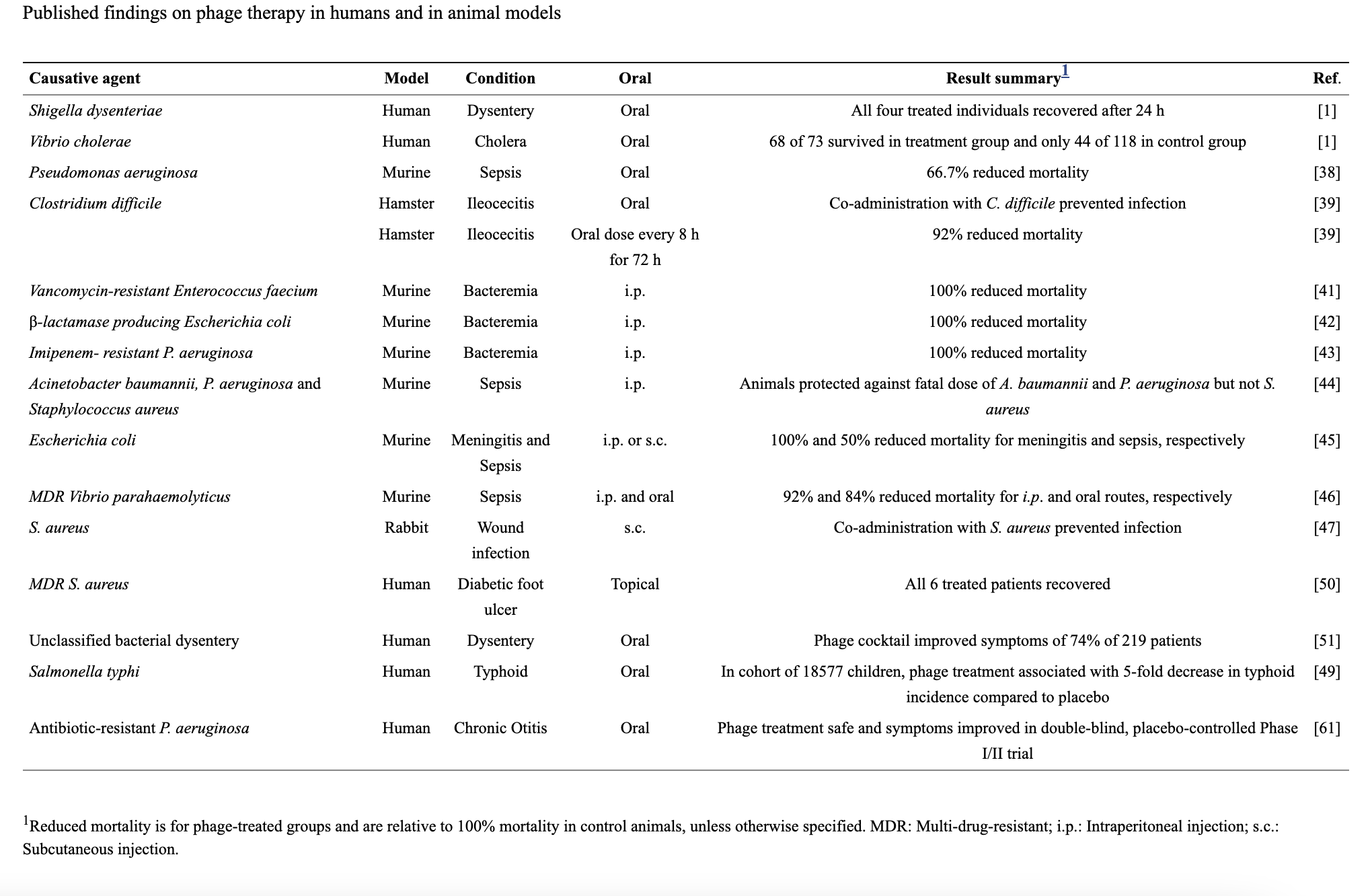Introduction:
Bacteria are becoming increasingly resistant to antibiotics, which is why antibiotic development has slowed down so much recently. Between 2010 and 2018, only 15 new antibiotics had been approved by the FDA, compared to the 63 approved between 1980 and 2000. There comes a time when you have too much of a good thing, and in the past decades, bacteria have been able to seriously improve their antibiotic resistance. We are in dire need of new ways to fight bacteria, and one of the most promising is none other than bacteriophage therapy.

Development History:
Bacteriophage therapy has been around for a century and was discovered even before the spread of antibiotics in medicine. French researcher Felix D’Herelle was officially the first to use bacteriophages to treat diseases, after he and Frederick Twort co-discovered phages in the early 20th century. D’Herelle made his discovery in 1915 when he was assigned to investigate an outbreak of severe hemorrhagic dysentery among French troops stationed near Paris. D’Herelle was able to isolate bacterial agents, which he later named “bacteriophages'', from patients’ fecal samples. He was immediately recognized for his work, later developed phage assays that are still in use today, and conducted the first bacteriophage therapy experiments in 1919 to treat patients with dysentery. Swayed by several successful experiments proving the efficacy of phage therapy, companies even began commercial production of phages for use against various bacterial pathogens. In the mid-20th century, bacteriophage therapy lost momentum in the West due to the eclipsing success of antibiotics, as well as its unpredictable results, which were mainly due to limited knowledge of phage biology at the time. Nevertheless, bacteriophage therapy would continue to develop in the Soviet Union thanks to D’Herelle’s Georgian colleagues. In fact, most of what we know about phage therapy comes from the Eliava Institute in the Republic of Georgia, where phage therapy is now part of standard clinical procedure, and the Hirszfeld Institute in Poland.

What are Bacteriophages?
Phages themselves are simple, yet diverse nonliving viruses that infect bacteria. They are found nearly everywhere on Earth and come in many shapes and sizes. All bacteriophages are composed of nucleic acid encapsulated by a protein coat, which is known as a capsid. As bacterial parasites, phages can interact with the bacterial host in a lytic or a lysogenic growth cycle. During a lytic cycle, phages produce tens to hundreds of prodigy phages, which leave the host cell with or without killing. During a lysogenic cycle, phages integrate their viral genetic material into the host genome, so that when the cell divides, the virus is transmitted to daughter cells. Because lytic bacteriophages have the ability to kill bacteria, only these are used to treat bacterial infections. In fact, bacteriophages are ideal therapeutic agents because they can kill bacteria while also being harmless to the patient.

Past Research:
Some of the most important and detailed English language reports on phage therapy come from Slopek et al. in Poland. Slopek et al. conducted several studies on the efficacy of bacteriophage therapy on bacterial infections. 550 patients that had bacterial septicemia ranging in age from 1 week to 86 years participated in this study. Antibiotic treatment was ineffective in 518 of the 550 patients, which is why the decision to use phage therapy was made. The etiologic agents used were staphylococci, Pseudomonas, Escherichia, Klebsiella, and Salmonella. Specific, highly potent phages were selected and then administered. Phages were administered orally; locally, by applying phage-containing dressings to wounds; and by applying drops of phage suspension to the eye, middle ear, or nasal mucosa. The phages were constantly monitored, and if phage resistance developed, phages were quickly replaced with different bacteriophages. Treatments lasted for 1 to 16 weeks, and the overall rate of success was 92%, and the rate of success for the 518 patients who found antibiotics to be ineffective was even higher, at 94%.
Are There Any Potential Concerns That Should Be Addressed?
In the long history of phage therapy, there have yet to be safety issues reported in regards to it, but there are some related concerns, which should be taken into account. Several factors must be considered when selecting phages to use for therapeutic purposes. Phages should be lytic, but they shouldn’t have potentially dangerous genetic determinants, or the ability to transduce bacterial genes. Phage-resistant bacteria may even emerge, which brings up the possibility of antibiotic-resistant bacteria becoming phage-resistant, and at the same time regaining their antibiotic sensitivity. To counter this point, there isn’t any documented correlation between antibiotic and phage sensitivities. Also, the rate of developing phage resistance is much lower than that to antibiotics, but the rate of developing phage resistance could be slowed down by using several phages simultaneously, in a phage cocktail.

What is the Significance of Bacteriophage Therapy?
Despite the negatives, bacteriophages have many advantages over typical antibiotics. Antibiotics usually target common processes among bacterial species, which can definitely be a positive aspect, but this could also cause dysbiosis. Most phages have narrow host ranges, limiting any side effects that could result from dysbiosis. Phage therapy is especially suitable for treating skin and wound infections, as well as deep tissue and bone infections. According to an article from D. Michael Olive and Joseph O’Connor from Nebraska Wesleyan University, “in order for an antibiotic to be effective, it must achieve a certain level in the blood or tissues”, but this can be difficult when treating “deep tissue and bone infections where drug penetration levels may fall below that need to treat the infection”. Phages are not this particular, and once a single phage finds its target, it can simply replicate and multiply across the area. Also, bacteriophage therapy might even be more affordable than antibiotics when targeting multidrug-resistant pathogens, as recorded in a study by Miedzybrodzki et al.
Around the world, growing numbers of scientists have come to recognize the promise of bacteriophage therapy. Soon after they were first discovered in 1915, bacteriophages entered the scientific world as a possible treatment for bacterial infections and diseases. They are now being applied in many fields, but with the decline of antibiotic development and effectiveness, phages are becoming a driving force in the clinical field that you should surely look out for.
